Want to help steer the Education and Adoption Bill through Parliament? Fancy having a go at defining a coasting school? Look no further than our handy ‘Choose your own coasting secondary school’ tool, useful for Secretaries of State in need of definition.
How to use the tool
We give you about 3,000 secondary schools with their % 5+ A*-C at GCSE plotted against their % free school meals (FSM6). Up in the top left are the selective schools which are, on the whole, effortlessly judged by Ofsted as being Outstanding (light blue). Over to the right are the schools situated in areas of higher social deprivation which are generally given worse Ofsted judgements. The shape of each school tells you its current school governance type.
Ready to start looking for coasting schools? We’ve given you a few sliders to have a go at seeing how many schools should escape this judgement. Contextual value added is a score that reports how pupils in a school do in their best 8 GCSE subjects, holding constant any socio-demographic data we have to hand (prior attainment, FSM, EAL, SEN, school %FSM, and so on). You can treat a negative value as a worse result compared to schools in similar circumstances (minus 6 = an average of one grade worse in one of best 8 subjects).
Of course, coasting requires a dynamic perspective, so you have CVA for 2012, 2013 and 2014. We also need to cross-check how a school is doing on Progress 8, just to make sure none of our apparently coasting schools are in fact already offering a perfectly Conservative-aligned traditional curriculum reasonably well. (Indeed, Progress 8 is likely to be used by the Secretary of State in her definition of coasting, but it makes no sense to judge schools on a 2012 Progress 8.)
An example of how it works
Figure 1 shows some schools we might want to label as coasting. They have a CVA below -18 in 2012, 2013 and 2014 (-18 = average one grade worse in 3 of best 8 subjects) and negative Progress 8 in 2014. 11 of our 77 are already judged as inadequate by Ofsted so are subject to intervention anyway. Academies, both with and without sponsors, appear in our coasting list in exactly the proportions as there are overall. There are slightly fewer Community schools in our list, far fewer Voluntary Aided schools and curiously Foundation schools are hugely over-represented (it may be that nearly all the high performing ones have already converted).
Figure 1: Could these be coasting schools?
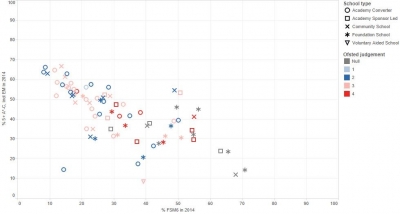
What else do we need to affirm we’ve chosen the right coasting schools?
The problem with our tool, as it currently stands, is that coasting looks the same as ‘paddling hard to keep your head above water’. Or indeed as Warwick Mansell explains, the same as having a bad year or two for reasons outside the control of the headteacher. But for our game only data can drive our discovery of coasting schools. There are other things we could look at in administrative data. Has the school changed headteacher in the past few years? Is the school struggling to stay afloat against a backdrop of high teacher turnover in the town or county? Does the school have to routinely manage high levels of pupil mobility? In my opinion it would be hard to argue a school is coasting when faced with any of these circumstances. (We’ve given you a rough estimate of local authority teacher turnover in the tool and perhaps we’ll provide a new improved tool with these data in a future blog.)
How should we choose how many schools we label as coasting?
My view, as I argued in Schools Week last Friday, is that the question should not be how many coasting or failing schools need help, but how many we have the resources to help. There are very real resource constraints – excellent headteachers looking for a new school, inspectors with hours to devote to school improvement or proven academy sponsors pursuing growth. Indeed, Warwick Mansell writes that ‘out of the 447 English schools currently rated inadequate, 240 – more than half – have yet to be converted into academies or recorded by the DfE as planned for academisation. Of these, 123 schools, or 51%, failed their Ofsted a year or more ago – yet still academy sponsorship does not seem to be on the horizon.’
In any case, the judgement of ‘coasting’ is fundamentally a relative one, as all judgements we make on schools are. This is true in data – our perspective on what it is possible for a school to achieve is necessarily revealed through the performance of others. And equally inspectors’ perspectives on what they see when they walk through a school’s door is shaped by what they’ve seen elsewhere.
Let us know how many coasting schools you can find.

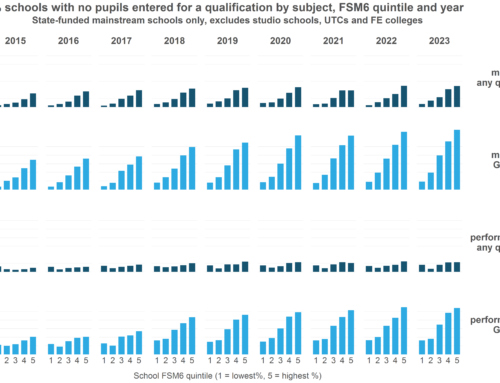
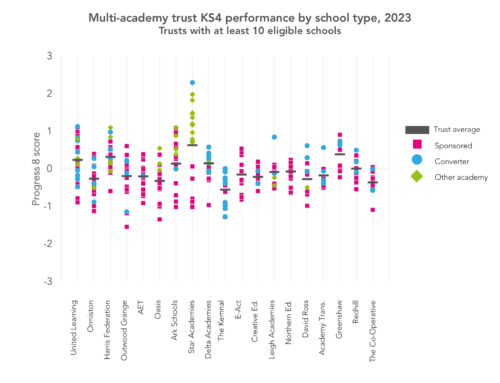
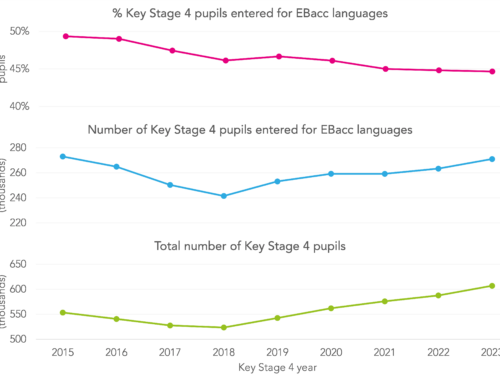

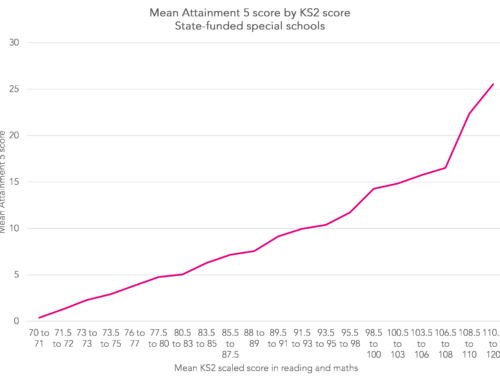
Leave A Comment